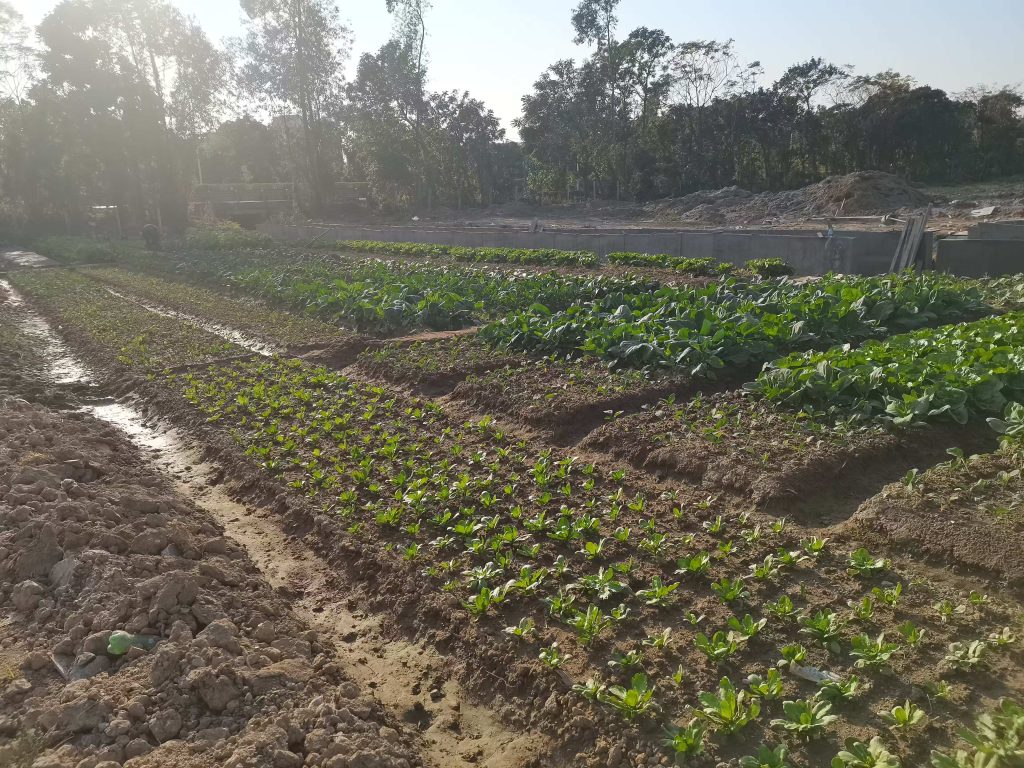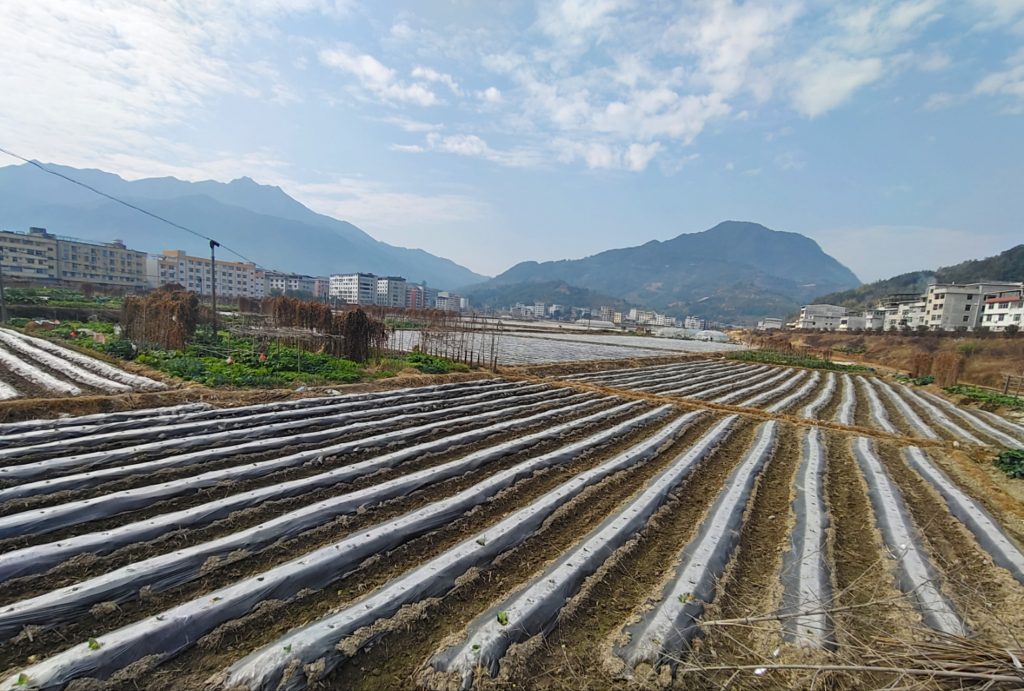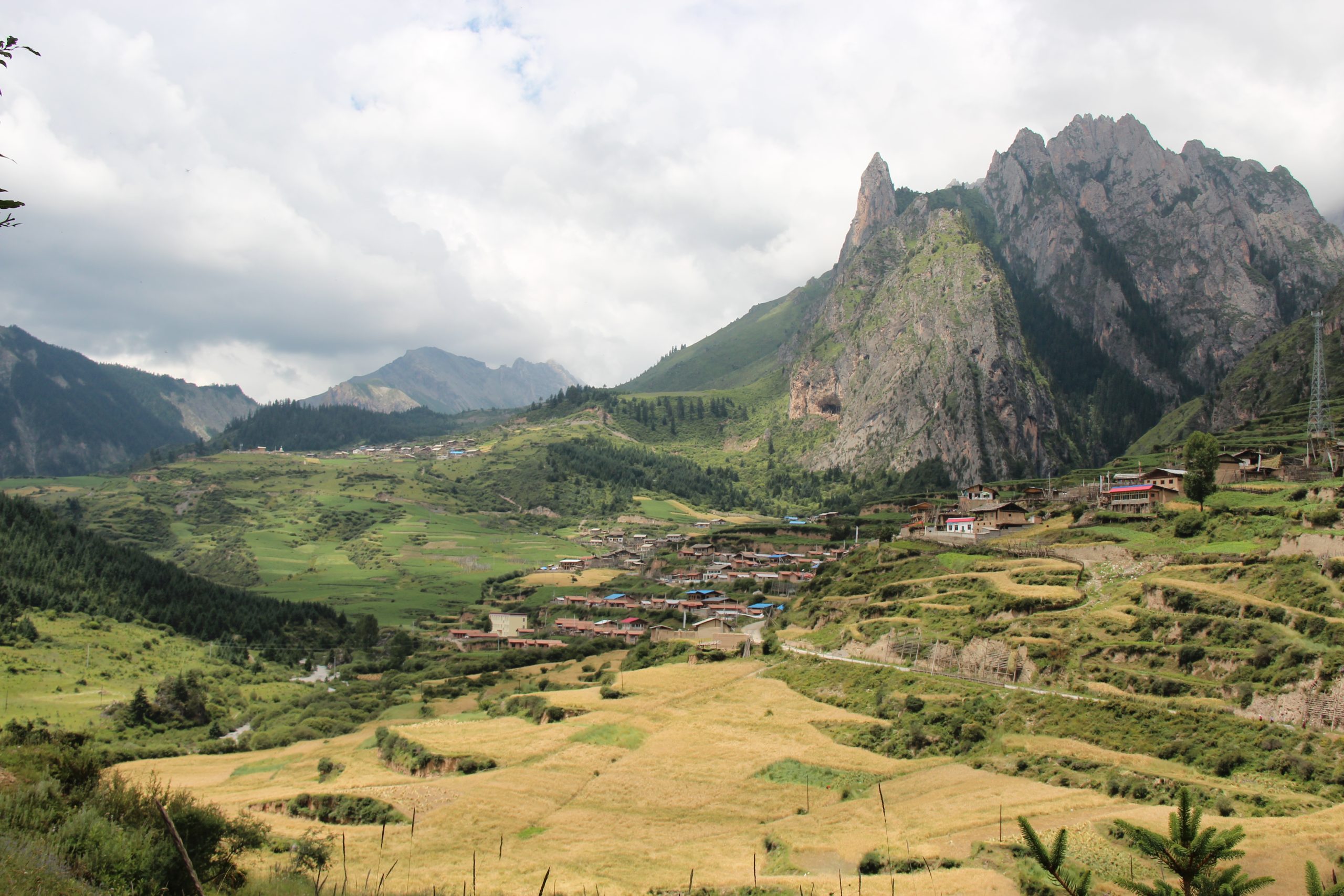Feature image: Zhagana, Gansu Province, China. Photo credit: Ziyue Hong
The Kunming-Montreal Global Biodiversity Framework sets an ambitious goal: protecting 30 percent of the Earth’s land by 2030. This commitment may be at odds with the need for agricultural production, especially in regions with ‘fragmented croplands’.
While many are familiar with forest fragmentation, the concept of cropland fragmentation is equally essential for conservation efforts. Fragmented croplands—areas smaller than 10 hectares that are not well connected to other farmlands—are often located in challenging terrain such as hills and mountains. These areas typically suffer from poor soil quality and lack of water resources. The lower productivity and economic challenges associated with fragmented croplands directly impact food security and rural livelihoods.
In China, small-scale farmers play a dominant role in agricultural production, and fragmented croplands are widespread. This could impact the country’s ability to meet its Sustainable Development Goals (SDGs), specifically by posing obstacles to food security (SDG 2: Zero Hunger) and pushing rural families towards poverty (SDG 1: No Poverty). The question then becomes: How can fragmented croplands be managed to contribute towards both conservation goals and sustainable development?
Here, I describe a new study that proposes a strategy to balance food production with environmental protection, offering potential solutions for managing fragmented croplands more effectively. This research aims to address the dual needs of agricultural productivity and ecological conservation in China’s complex agricultural landscape.

Ouping Deng and colleagues from Zhejiang University recently looked at how China manages its fragmented croplands. Their study, published in 2024, explored management policies that could lead to better environmental and economic results. Deng’s team used innovative simulations to predict China’s land use changes until 2050. Based on historical data, they considered factors like urban growth and shifts to large-scale farming. This approach helped forecast how different strategies might impact fragmented croplands, offering valuable insights into the country’s future agricultural landscape.
Their study revealed an encouraging finding: 90 percent of China’s croplands are suitable for aggregation into larger farms exceeding 10 hectares. This presents a significant opportunity to address inefficiencies and environmental challenges associated with fragmented farmlands. The remaining 10 percent of croplands, which are often in remote areas, pose unique challenges. These areas contribute just 8 percent of the country’s total crop output, but consume 15 percent of nitrogen fertilisers.
So, how can these remaining fragmented croplands be improved? Deng and his team propose two potential solutions. The first involves changing the types of crops grown on these lands—a strategy known as ‘optimising crop structure’—and using some of the fragmented croplands for cattle grazing. This could reduce China’s beef imports, significantly cut nitrogen and greenhouse gas emissions, and boost animal food supply. Additionally, it could generate billions in economic benefits annually, offering a win-win solution for agriculture and the environment.
The second strategy—‘displacement of cropland’—offers a bolder approach. It involves completely retiring these scattered farmlands. Farming would shift to more suitable areas, where large-scale agriculture is possible. This could transform China’s agricultural landscape, potentially boosting efficiency while allowing fragmented lands to recover naturally. This strategy also aligns well with the ongoing efforts in the region. It builds on the success of the Grain for Green programme, which has already retired many farms over the past two decades. This history demonstrates that large-scale land conversion is not only possible but a proven approach in the country’s agricultural policy.
Moreover, the cropland displacement strategy could significantly boost China’s agricultural output, especially in livestock, vegetables, and fruits. It would also substantially reduce environmental impacts by cutting down nitrogen use and greenhouse gas emissions, and generate tens of billions in annual economic benefits, offering a transformative solution for agriculture.

You might think that more intensive croplands don’t seem environmentally friendly. While counterintuitive, this approach can benefit biodiversity through a ‘land sparing’ strategy. Land sparing involves concentrating agriculture in some areas and leaving other regions to recover. It often contrasts with ‘land sharing’, where farming and nature coexist. In 2019, Andrew Balmford and colleagues conducted a comprehensive study comparing these strategies across different cultures and contexts. They found that land sparing generally outperforms land sharing for biodiversity conservation in most situations.
While there are exceptions and nuances to consider, the 2019 study supports the idea that intensifying agriculture in some areas, as proposed for China’s fragmented croplands, can be an effective environmental strategy. Concentrating farming could free up more land for nature conservation, thereby benefiting biodiversity. Deng’s 2024 study highlights a crucial insight: croplands can play a vital role in achieving our biodiversity goals. This research reminds us that sustainable development isn’t just about nature conservation; it’s about creating harmony between human prosperity and environmental health.
As we face global challenges like food security, climate change, and biodiversity loss, solutions must consider the interconnectedness of social and ecological systems. By rethinking our approach to agriculture, we can improve human well-being while protecting our planet. This recent study underscores the importance of collaboration between macroeconomists, environmental scientists, and policymakers to create holistic strategies that balance human needs with ecological conservation for a sustainable future.
Further Reading:
Balmford, B., R. E. Green, M. Onial, B. Phalan and A. Balmford. 2019. How imperfect can land sparing be before land sharing is more favourable for wild species? Journal of Applied Ecology 56(1): 73–84. https://doi.org/10.1111/1365-2664.13282.
Deng, O., J. Ran, S. Huang, J. Duan, S. Reis, J. Zhang and B. Gu. 2024. Managing fragmented croplands for environmental and economic benefits in China. Nature Food 5(3): 230–240. https://doi.org/10.1038/s43016-024-00938-7.
This RIT is part of a series: ‘Letters from China’, which periodically summarises new research from ecology and conservation from China. It is curated by Dr. Eben Goodale, Xi’an Jiaotong-Liverpool University, China, with editorial support from Chief RIT Editor Dr. Daniel J. Read. Click on the ‘Letters from China’ tag above the article title to read other RITs in this series.






